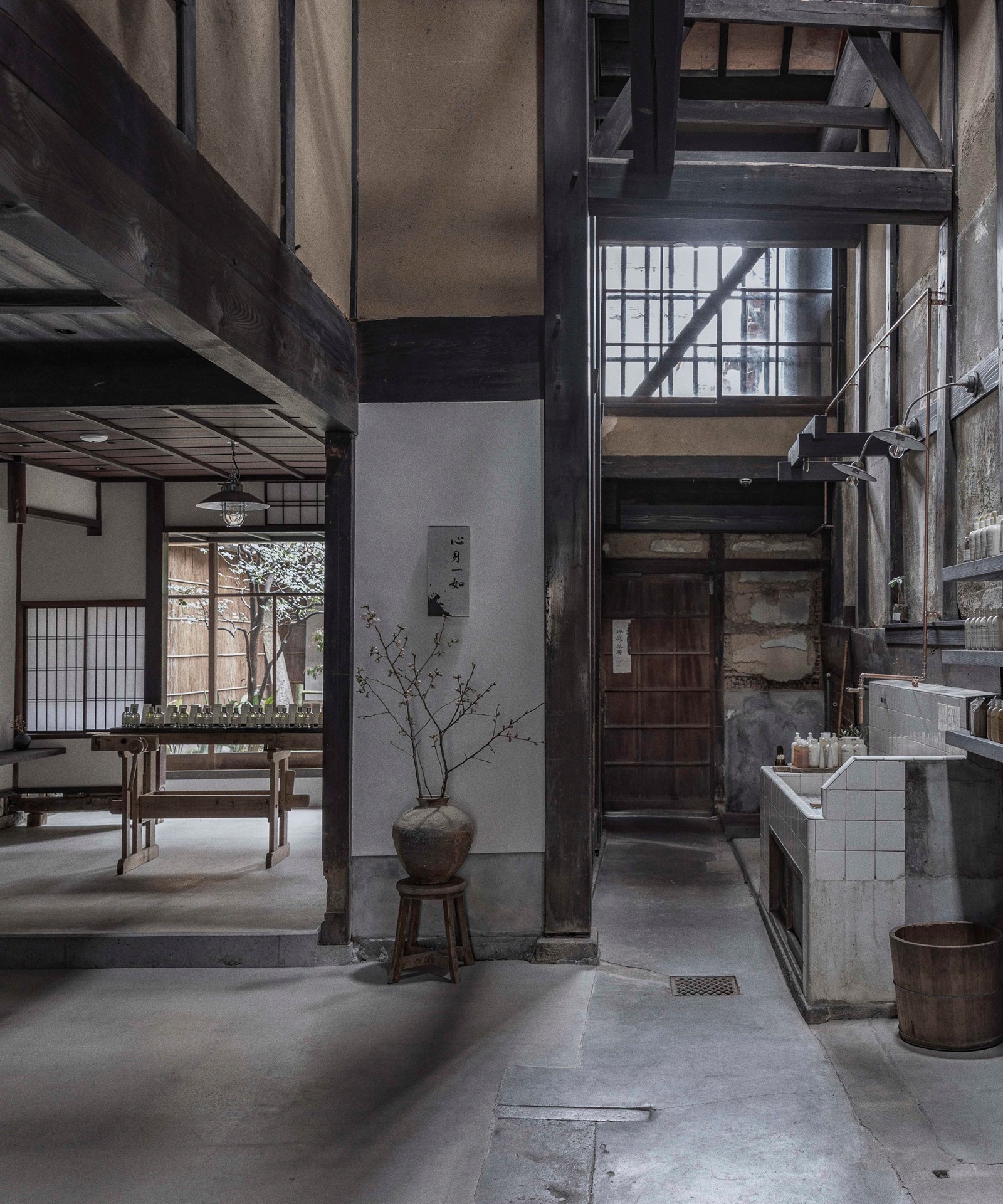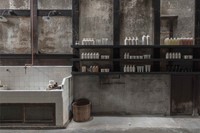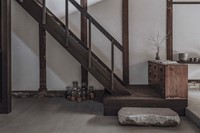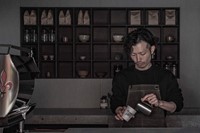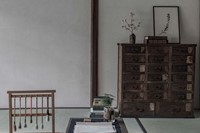The rush of wind, water and distant thunder on David Bowie’s 1977 Kyoto-inspired track Moss Garden conjures a little of the bewitching spell the Japanese city casts – Bowie was hooked from his first visit to Kyoto in the 70s, when photographer Masayoshi Sukita snapped him wrestling with an umbrella, visiting teahouses and buying yawata-maki. A city indelibly tethered to its seasons, with 2,000 temples and shrines and 17 UNESCO sites, even the breeze rustling through a bamboo forest in the north of the city is so beautiful it’s been designated an official “soundscape”. Which is all to say, Le Labo’s choice of Kyoto – the artisan capital of Japan – for its new flagship store chimes with everything the fragrance company cherishes. Put simply, it’s a city that suits them. Treading lightly, a love for handmade processes and the magic found in the subtle, evanescent details – all are connected to the Japanese concept of wabi-sabi, a guiding principle for Le Labo’s global brand president and creative director, Deborah Royer, and a mindset that culminated last week in the springtime unveiling of a meticulously renovated wooden townhouse (machiya) as Le Labo’s flagship Kyoto store.
Hidden away on a quiet treelined street beside a canal dotted with white herons, the space, which dates back to 1879, triggered something of a coup de foudre in Royer the moment she stepped through the diminutive wooden entrance. “It felt right to have a significant anchor in Kyoto,” she says, sitting on a tatami mat on a silvery spring morning the day before the store opens its doors to the city. “I like to pay attention to what can show up – the little accidents on the road are sometimes the best discoveries.” Formerly a family-owned sake brewery stretching back three generations and later a flower shop, the machiya had been standing empty with its ghosts until Royer began drawing on local craftspeople for a renovation that builds on the strong bones of the structure’s past to incorporate its fragrant new present. Today, beyond the fluttering canvas in the doorway is a tranquil oasis of light, wooden beams, copper piping, raw unfinished walls and a fragrance lab entirely crafted from Japanese wood. Through the airy rear windows, the original miniature Japanese garden has been revived with native plants and stones, and a tiny café, the brewery’s former storeroom, serves coffee and matcha tea. Up a narrow set of wooden stairs, two tatami-covered rooms house a fragrance organ – hundreds of glass bottles and vials brimming with essential oils – and an atelier dedicated to a rotating cast of Kyoto artists; when we visit, a master calligrapher is scrupulously personalising Le Labo labels with an inky brush.
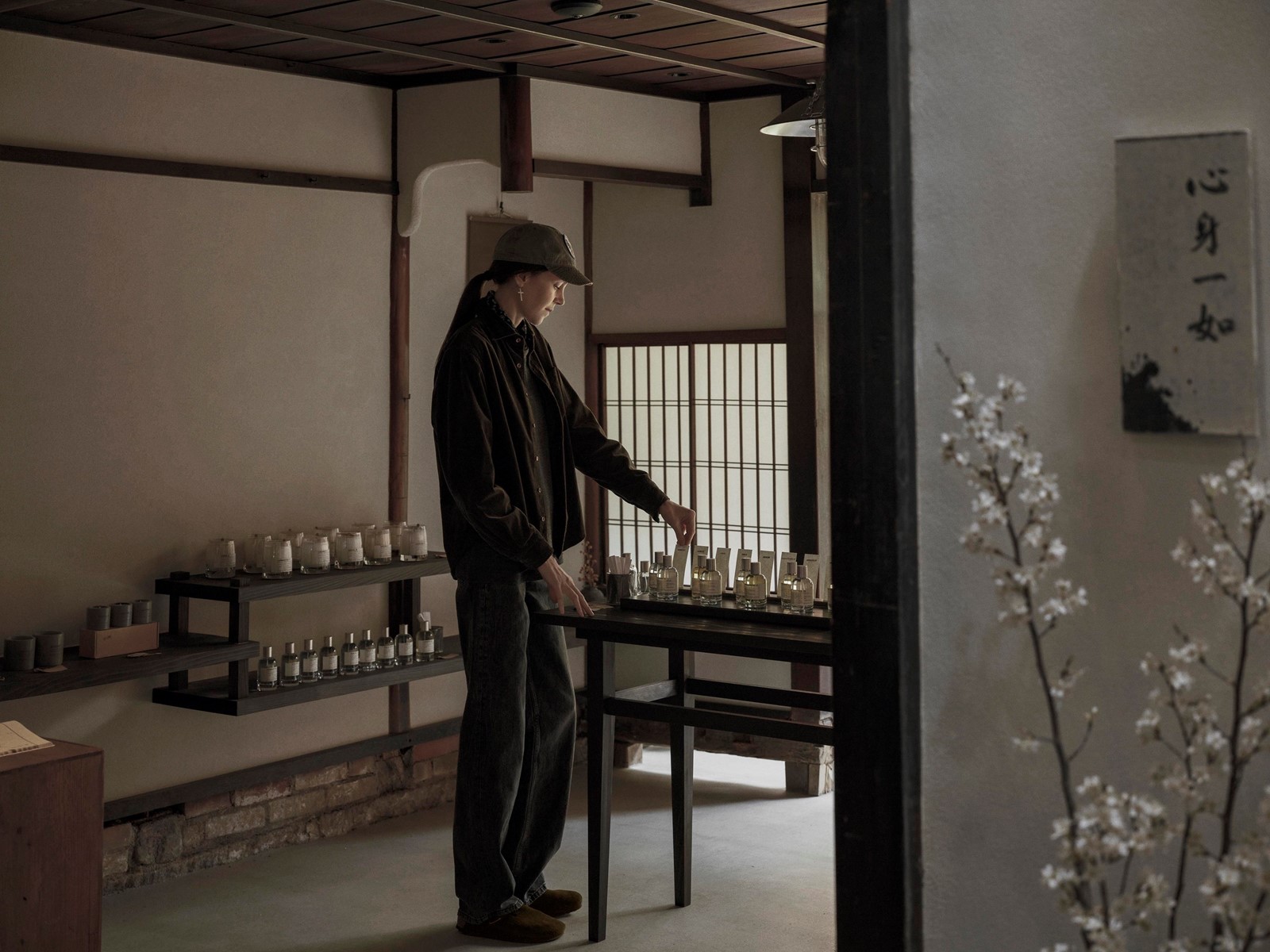
More than a year in the making, it’s a textured blend of old and new that preserves the rustic wear and tear of the building’s former incarnation. “I love when things are imperfect and a bit cracked, because it allows us to celebrate what they still have to say,” says Royer. “It was a subtle dance between the past and a new life.” Which puts the lab in neat harmony with Kyoto itself, a city that spans from the ancient – a rich history of warring emperors and rebelling shoguns, haiku-writing priests and Kabuki theatre – to the radical (Yoko Ono first staged her infamous Cut Piece here in 1964, inviting her audience to snip slices out of her clothes), and today’s contemporary Kyotographie photography festival, which takes over venues across the city from Zen gardens to arcades, printing plants and castles. Royer, who grew up on a farm in the French countryside, was also enamoured by Kyoto’s proximity to nature – it’s surrounded by mountains on three sides (incidentally, the mountains Kyoto-born author Haruki Murakami placed his fictional hostel in for Norwegian Wood), the Kamo river meanders through the city and there are vast expanses of silver grass to the north. “As a child I witnessed every step of planting and harvesting,” says Royer. “I guess it triggered a sense of curiosity about how people use their hands, the idea of creating an entire life around perfecting your craft.”
“I love when things are imperfect and a bit cracked, because it allows us to celebrate what they still have to say” – Deborah Royer
That interest in slow, patient process is the bedrock of Le Labo’s philosophy, cutting through the cacophony of mass market Duty Free juice with intentional, clutter-free perfumes. Its first store, a stripped-back space in New York’s Nolita with original fleur-de lis patterned tin wall, kick-started their tradition of drawing open the curtain on perfume creation. Anyone strolling in can watch their scents being measured, weighed, assembled and hand-labelled – initially a core cast of ten fragrances that has gradually expanded. (“Contrary to wine, fragrances don’t age well,” says Royer, “so blending at the very last minute allows the freshest quality.”) Whatever olfactory alchemy occurs when scent is processed through our limbic systems, Le Labo (“the lab” in French) is a master of keeping things pleasingly simple: each fragrance is named after its principal essence, combined with a number denoting the amount of ingredients it contains. (So Thé Matcha 26 blends that accord with notes including creamy fig, vetiver, cedarwood and bitter orange; Ambrette 9 is a nine-ingredient creation based on that rarified seed.) Although vegan and cruelty-free, there are no splashy claims on their straightforward labels and brown-cardboard packages – and refills are encouraged: in Tokyo’s Daikanyama lab, tucked in a walkable neighbourhood of eclectic shops, repeat customers like their new labels stuck over the old, rather like a well-loved and travelled suitcase.

That Tokyo lab, founded in 2007, was the first outpost Le Labo opened beyond the US, a gesture of affinity with Japan that has proved to be mutual. Le Labo’s addictive, exclusive tribute to Tokyo, Gaiac 10 – a warm, smoky concoction named for a hard, greenish wood – has become something of an obsession for Tokyo dwellers, and a frustration for aficionados with the misfortune of living outside the country. “There’s a resonance in Japan,” says Royer. “The country got the brand, I think, before a lot of people did.” Underlining her point, the day after we meet, queues are forming at Le Labo’s new Kyoto gem. If the company was dreamed up in the hills of Grasse and flourished in New York, Japan is indisputably the beacon for its mindset: “I notice the change in my nervous system every time I’m here,” says Royer. “Japan has been a guiding light and grounding force from the earliest days of our founding. When I stepped inside this Kyoto space for the first time, everything just clicked into place; we’d found our home.”
